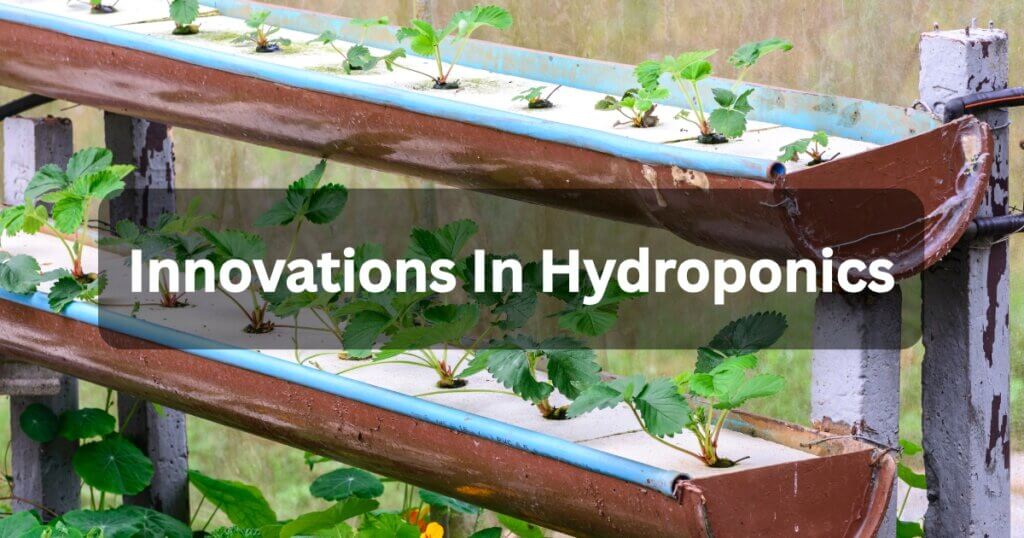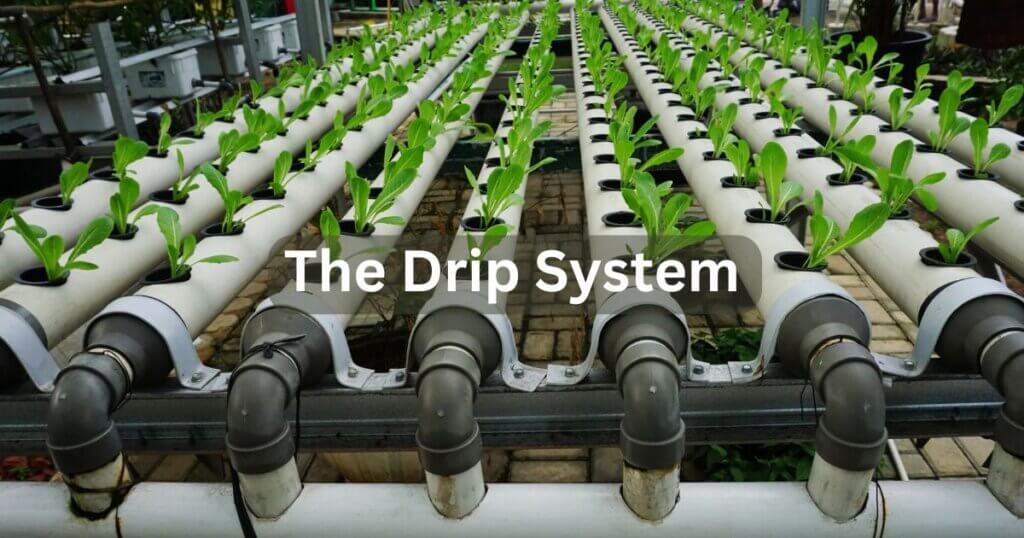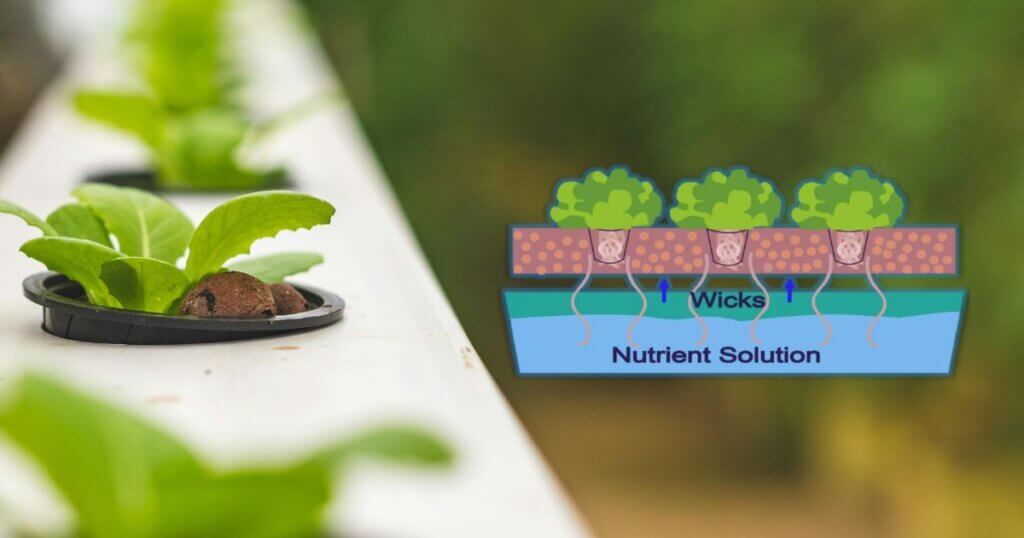Game-Changing Innovations in Hydroponics You Need to Know About

Some of the links in this post are affiliate links. As an Amazon Associate, we earn a referral fee from qualifying purchases—at no extra cost to you.
Imagine growing fresh lettuce, juicy tomatoes, or herbs without touching soil or worrying about droughts. Sounds like something from a sci-fi movie, right? Welcome to the world of hydroponics—a rapidly evolving field that’s shaking up agriculture in ways we never thought possible.
This article explores the most exciting innovations in hydroponics that are reshaping how we grow food—whether you’re a backyard grower or a commercial-scale producer.
Table of Contents
Why Hydroponics Is the Future of Sustainable Farming
Environmental Benefits Driving Innovation
Hydroponics uses up to 90% less water than traditional farming. That’s not just impressive—it’s revolutionary. In a world facing water scarcity, these systems recycle water, significantly reducing waste. And with no soil needed, hydroponics eliminates harmful runoff, making it a dream solution for eco-conscious growers.
Food Security and Urban Farming
With populations booming and arable land shrinking, hydroponics offers a smart, sustainable solution to feed growing urban centers from the inside out. By eliminating the need for soil and drastically reducing water use, it makes farming possible in places where traditional agriculture can’t survive. Rooftop farms, converted warehouses, and high-tech shipping containers are now producing fresh greens year-round, right where people live. It’s not just innovation—it’s the future of city-grown food.
Cutting-Edge Technologies Transforming Hydroponic Systems
Automated Hydroponic Systems and Smart Farming
Say goodbye to manual pH testing and adjusting nutrient levels by hand. Automation now handles everything—water flow, lighting schedules, nutrient dosing—all managed through mobile apps.
The Hydroponics Growing System automates lighting, water circulation, and nutrient delivery. It’s a compact countertop solution perfect for beginners growing herbs or lettuce indoors with minimal effort.
The Rise of IoT in Hydroponics
Internet of Things (IoT) devices are making hydroponic systems smarter than ever. Sensors track temperature, humidity, and nutrient levels in real-time, sending data to your phone. This not only boosts yields but also prevents crop failures before they happen.
The Inkbird WiFi Smart Sensor allows you to remotely monitor temperature and humidity in your hydroponic system. It sends real-time alerts to your phone, making it easy to maintain optimal conditions.
AI-Driven Crop Monitoring and Analytics
Artificial Intelligence is the ultimate gardening assistant. AI tools analyze data patterns, predict diseases, optimize light cycles, and even recommend the best crops based on environmental conditions.
Revolutionary Growing Techniques
Vertical Farming Meets Hydroponics
Vertical farming maximizes space by growing plants in stacked layers. When paired with hydroponics, you can produce 10x more food in the same footprint. It’s the ultimate space-saving combo—perfect for urban settings.
Aeroponics: Mist-Based Evolution
Think hydroponics is cool? Aeroponics takes it further. Instead of water, roots are suspended in air and misted with nutrients. This technique uses even less water and promotes faster growth and higher yields.
Aquaponics Integration: Fish and Plants in Harmony
Innovations in hydroponics now merge with aquaculture. In aquaponics, fish waste provides nutrients for plants, while the plants purify the water for the fish. It’s a symbiotic system that mimics natural ecosystems.
Game-Changing Nutrient Delivery Innovations
Precision Nutrient Management with AI
AI-based nutrient delivery systems adjust compositions in real-time based on plant needs. These systems “learn” from your crops and deliver tailor-made nutrition to every root zone.
pH and EC Automation Systems
Maintaining pH and electrical conductivity (EC) used to be a pain. Now, automated probes monitor and adjust these levels around the clock. That means healthier plants and fewer headaches for growers.
The Bluelab Combo Meter Plus provides precise readings of pH, electrical conductivity (EC), and temperature, helping growers maintain optimal nutrient balance with ease.
Breakthroughs in Grow Lighting
Full-Spectrum LED Innovations
Modern LEDs go beyond red and blue spectrums. Full-spectrum LEDs mimic sunlight and adapt to each stage of plant growth—from seeding to flowering—resulting in stronger, tastier harvests.
The Spider Farmer SF-1000 LED Grow Light delivers full-spectrum lighting tailored for each plant stage. It supports healthy growth, energy savings, and increased yield, especially in indoor hydroponic setups.
Adaptive Lighting Systems Based on Plant Stages
Some smart grow lights now automatically shift intensity and wavelength based on a plant’s growth phase. This boosts energy efficiency and yields.
Sustainable Resource Management in Hydroponics
Closed-Loop Water Recirculation Systems
Closed-loop hydroponic systems recycle the same water continuously, minimizing waste and maximizing efficiency. These systems use filtration and nutrient management to keep the water clean and balanced, allowing plants to thrive with minimal input. Innovations like UV sterilization and automated nutrient dosing push water savings even further. In drought-prone or water-scarce regions, this approach is a game-changer for sustainable farming.
Solar-Powered Hydroponics
Pairing hydroponics with solar panels enables fully off-grid farming systems that are both sustainable and self-sufficient. These setups harness the sun’s energy to power pumps, lights, and sensors, reducing dependence on traditional electricity. This is especially valuable in remote or developing areas where power infrastructure is limited or unreliable. It’s a smart way to grow food anywhere while minimizing your environmental footprint.
The Renogy 100W Solar Panel Kit provides sustainable energy to power pumps, lights, and sensors in a hydroponic system. It’s perfect for growers aiming to reduce their carbon footprint or operate off-grid.
Affordable DIY Innovations for Small Growers
3D-Printed Hydroponic Components
3D printing is democratizing hydroponics. Growers can now print custom parts like net pots, pipe holders, or even full systems at home. It’s cheap, customizable, and fun.
The Creality Ender 3 V3 SE 3D Printer makes it easy to print custom hydroponic parts like net pots, pipe brackets, or even full system modules. A top choice for innovative home growers.
Budget-Friendly Sensor Kits for Home Gardens
Want to monitor your hydroponic system without spending a fortune? Affordable sensor kits now provide real-time data on temperature, pH, light, and humidity—no coding required.
The Hydroponic Sensor Kit includes essential sensors for monitoring pH, TDS, and temperature. It’s a great low-cost option for building a custom smart hydroponic system.
Hydroponics Meets Data Science
Big Data Analytics in Plant Growth
Data analytics tools can detect which growing conditions produce the highest yields. They turn your grow logs into valuable insights, helping you make better decisions every season.
Cloud-Based Farm Management Platforms
Cloud-based dashboards offer full control over hydroponic systems—even remotely. Adjust lighting, monitor sensors, analyze data—all from your laptop or phone.
Real-World Applications and Startup Innovations
Urban Hydroponic Farms Changing Local Food Systems
Cities like New York, Tokyo, and London are home to high-tech urban hydroponic farms. These grow local, fresh, pesticide-free produce year-round—cutting down on food miles and packaging waste.
Startups Driving Hydroponic Disruption
Innovative startups are reshaping hydroponics—from modular kits for classrooms to AI-powered greenhouse systems. Companies like Plenty, AeroFarms, and Freight Farms are leading the charge.
Conclusion
Hydroponics is no longer just an alternative—it’s the future of agriculture. As these game-changing innovations continue to evolve, they’re making it possible to grow more food, more efficiently, with less impact on our planet. Whether you’re a home grower, a startup founder, or a curious foodie, now’s the perfect time to dive into the world of hydroponic innovation. The future is green—and it’s already here.
FAQs – Innovations in Hydroponics
1. How do AI and automation actually reduce labor in hydroponics?
AI and automation reduce the need for manual monitoring and intervention by handling repetitive tasks like nutrient dosing, pH balancing, lighting schedules, and even detecting plant stress. This allows growers to spend less time micromanaging and more time scaling operations or experimenting with new crops.
2. What’s the difference between hydroponics, aeroponics, and aquaponics in terms of efficiency?
Hydroponics uses water and nutrients to feed plants; aeroponics uses nutrient-rich mist, and aquaponics combines fish waste with hydroponics. Aeroponics is typically the most water-efficient, while aquaponics is more sustainable due to its symbiotic ecosystem. However, hydroponics often offers the best balance of control, scalability, and simplicity.
3. Can these innovations make hydroponics viable in developing countries?
Yes. Solar-powered systems, affordable sensor kits, and 3D-printed components lower costs and infrastructure needs, making hydroponics more accessible to communities with limited resources. When combined with education and local support, these innovations can dramatically improve food security in remote or arid regions.
4. Are there risks or downsides to using smart hydroponic systems?
While smart systems offer incredible convenience and precision, they rely heavily on consistent power and internet access. Technical failures, software bugs, or sensor inaccuracies can disrupt plant health. Backup systems and regular manual checks are essential to avoid total crop loss in case of glitches.
5. How are startups using data to improve hydroponic growing outcomes?
Startups collect massive datasets on plant performance, climate conditions, and system behavior. They use machine learning to identify the most efficient growing patterns, predict issues before they arise, and automate decisions. This data-driven approach helps optimize yield, reduce waste, and tailor environments to specific crops.
Other Useful Resources Related To Innovations In Hydroponics
- Hydroponics & Sustainability: Everything You Need To Know
This article explores how hydroponics contributes to sustainable farming practices, highlighting benefits such as increased crop yield, efficient resource use, and a reduced environmental footprint. (forestnation.com) - Innovations in Hydroponics: A Deep Dive Into Emerging Technologies
This resource delves into cutting-edge technologies transforming hydroponics, including AI, machine learning, and IoT integration, enhancing efficiency and scalability in soilless farming. (climatecontrol.com) - Latest Technological Innovations in Hydroponic Farming
This article discusses advancements in hydroponic farming, focusing on LED grow lights, CMH grow lights, and smart lighting controls that optimize plant growth and resource utilization. (hydroponicstown.com) - Top Innovations in Hydroponics Technology for 2025
This piece highlights emerging trends in hydroponics for 2025, such as smart hydroponic systems, compact vertical hydroponic towers, and eco-friendly practices, shaping the future of urban agriculture. (hydroponicsfarming.uk) - 5 Innovative Hydroponic Farming Techniques with Proven Yield Increases
This resource outlines innovative hydroponic farming techniques, including vertical farming, aquaponics, and automation, demonstrating how they lead to higher yields and efficient resource use. (miilkiiagrow.com)










